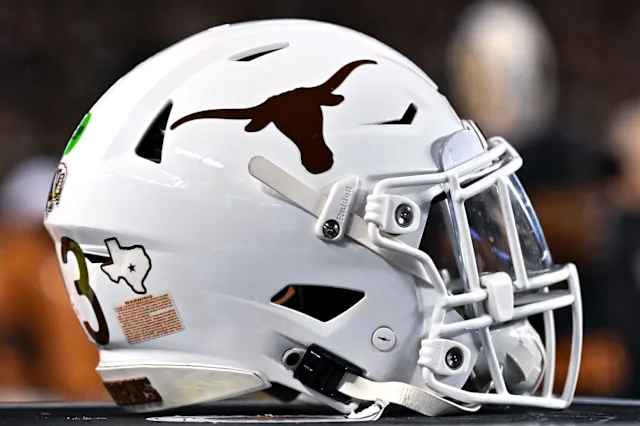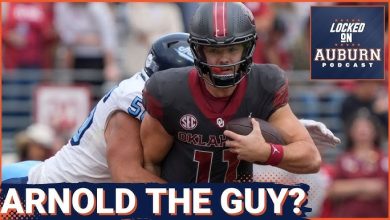Is it possible for Texas football’s latest 2026 recruit to emulate Travis Hunter’s two-way success?

Is it possible for Texas football’s latest 2026 recruit to emulate Travis Hunter’s two-way success?
The landscape of college football has evolved significantly over the past decade, with versatility and multi-dimensional skill sets becoming highly valued commodities. Among the most prominent exemplars of this trend is Travis Hunter, a highly touted recruit who made waves by excelling on both sides of the ball in high school and college. As Texas football continues to strengthen its recruiting efforts, the question arises: Can their latest 2026 recruit emulate Hunter’s two-way success? To answer this, we must analyze Hunter’s journey, evaluate the attributes of the Texas recruit, consider the challenges and opportunities involved in playing both offense and defense at the highest levels, and explore the broader implications for college football.
### Travis Hunter: The Archetype of the Two-Way Player
**Background and Rise to Prominence**
Travis Hunter’s ascent to national prominence began in high school, where he demonstrated exceptional talent as both a wide receiver and a cornerback. Playing at Collins Hill High School in Georgia, Hunter quickly established himself as one of the most dynamic and versatile athletes in the nation. His combination of speed, agility, ball skills, and defensive prowess made him a nightmare for opponents on both sides of the ball.
Hunter’s recruitment saga was historic; he was the first-ever five-star recruit to commit to Jackson State, choosing Deion Sanders’ program over offers from top-tier programs like Florida State, Alabama, and Georgia. His decision drew widespread attention and underscored the value of two-way players in modern football. Hunter’s transition to college football immediately showcased his ability to impact games in multiple ways, from locking down top receivers to making explosive plays as a receiver and returner.
**Attributes Contributing to Hunter’s Success**
– **Athleticism:** Hunter’s speed (measured at sub-4.4 seconds in the 40-yard dash), quickness, and agility allow him to cover ground rapidly, whether in coverage or running routes.
– **Ball Skills:** His ability to track and leap for the ball makes him a reliable receiver and an intimidating defender.
– **Physicality:** At around 6-foot-1 and 185 pounds, Hunter combines size and strength that allow him to contest catches and tackle effectively.
– **Football IQ:** His understanding of offensive and defensive schemes enables him to anticipate plays and position himself advantageously.
Hunter’s success underscores a fundamental principle: multi-dimensional players who can excel on both sides of the ball offer strategic advantages, and their development requires a unique combination of physical talent, football IQ, and mental toughness.
—
### The Texas 2026 Recruit: Who Are They?
Turning our attention to Texas’s newest 2026 recruit, it’s essential to understand their background, attributes, and potential to develop into a two-way threat. While specifics vary as the recruit’s profile develops, certain characteristics are indicative of a player with two-way potential.
**Profile Overview**
The 2026 recruit, a phenom from Texas, is projected to be a highly versatile athlete with exceptional athletic traits. Early scouting reports emphasize:
– **Size and Frame:** Standing approximately 6-foot-2 and weighing around 190 pounds, this athlete possesses the physicality necessary to play both receiver and defensive back at a high level.
– **Speed and Agility:** Recorded times in the 40-yard dash in the low 4.4s, coupled with explosive vertical jump metrics, suggest elite athleticism.
– **Ball Skills:** Demonstrated hands and route-running as a receiver, along with the ability to track and contest passes on defense.
– **Football IQ:** Early indications point to a high football IQ, with awareness and decision-making skills that belie their age.
**Position Flexibility**
While they may initially be recruited as a wide receiver or cornerback, their skill set implies the potential to transition seamlessly between roles. Their high school tape displays highlights as both a receiver making acrobatic catches and a defensive back breaking up passes or intercepting.
**Developmental Trajectory**
The key to their future success will depend heavily on coaching and their willingness to develop on both sides of the ball. Their physical tools are promising, but the technical and mental facets of two-way play require dedicated effort and strategic development.
—
### Challenges and Opportunities of Playing Two-Way Football at the College Level
**Physical Demands and Fatigue**
One of the primary challenges for two-way players is the physical toll. Playing both offense and defense in high school is manageable given the limited game time and lower intensity compared to college. However, at the college level, the physical and mental demands increase exponentially. The risk of fatigue, injury, and burnout is real, and managing playing time becomes crucial.
**Specialization Trends**
Modern college football increasingly favors specialization. Most players focus on one position to maximize their development and efficiency. Two-way players are rare due to the demanding nature of the game, but when successful, they can be game-changers. Hunter’s example shows that with proper conditioning, coaching, and mental toughness, it’s possible to excel on both sides.
**Strategic Fit and Scheme Compatibility**
For a college coach, utilizing a two-way player involves designing schemes that maximize their strengths while minimizing fatigue. This could mean rotating them between roles, employing them in specific packages, or using their versatility to create mismatches.
**Skill Development and Training**
Success depends heavily on the athlete’s dedication to continuous improvement. Developing the technical skills for both offense and defense requires disciplined training, film study, and understanding of multiple positional nuances.
**Mental Toughness and Playmaking Ability**
A two-way player must possess resilience, focus, and adaptability. The mental challenge of switching mindsets between offensive and defensive responsibilities is significant but can be mitigated through experience and coaching.
—
### Can the Texas 2026 Recruit Follow in Hunter’s Footsteps?
**Assessing the Potential**
Based on current scouting reports and physical attributes, the Texas 2026 recruit demonstrates many qualities that align with Hunter’s profile. Their size, speed, ball skills, and football IQ suggest they have the raw tools to excel as a two-way player.
**Comparative Advantages**
– **Physical Traits:** They are taller and heavier than Hunter at the same age, providing a physical advantage in contested catches and coverage.
– **Athleticism:** Their recorded times and explosiveness match or exceed Hunter’s early metrics.
– **Versatility:** Early on, they have showcased production on both sides of the ball, indicating a natural aptitude for two-way play.
**Potential Limitations**
However, there are also challenges to consider:
– **Developmental Stage:** As a 2026 recruit, they are still in early development, and their skill set needs refinement.
– **Experience Level:** Their high school competition level varies, and transitioning to college athletics will test their adaptability.
– **Work Ethic and Coaching:** Success as a two-way player hinges on their willingness to learn, adapt, and endure rigorous training.
**Strategic Pathways to Success**
– **Gradual Specialization:** They might initially focus on one role—say, wide receiver—while developing secondary skills on defense, or vice versa.
– **Physical Conditioning:** Maintaining peak physical condition will be critical to handle the demands of two-way play.
– **Skill Development:** Focused coaching on route-running, coverage techniques, and game awareness will accelerate their readiness.
**Historical Precedents**
Hunter’s success was rooted in exceptional athleticism and relentless work ethic. Many players have followed similar paths if they possess the right physical tools and mental toughness. Examples include Deion Sanders, Charles Woodson, and Patrick Surtain, who played multiple roles early in their careers before specializing or dominating in one position.
—
### Broader Implications for College Football and Texas Football
**Evolving Player Roles**
The success of two-way players like Hunter has challenged traditional positional specialization, encouraging programs to identify and develop multi-talented athletes. Texas’s investment in versatile prospects indicates a strategic shift towards this philosophy.
**Recruiting Strategies**
Recruiters increasingly seek athletes with hybrid skill sets, emphasizing size, speed, and football IQ over narrow positional specialization. The Texas recruit exemplifies this trend, and their development could influence future recruiting pipelines.
**Training and Development**
Coaches are adopting innovative training methods to prepare athletes for dual roles, including position-specific drills, endurance training, and mental conditioning. Texas’s coaching staff, led by offensive and defensive coordinators, will play a crucial role in nurturing this talent.
**Impact on Game Strategy**
Teams that effectively utilize two-way players can create mismatches, control tempo, and adapt dynamically during games. These players provide strategic flexibility, especially in high-stakes situations.
—
### Conclusion: Is It Realistic for the Texas 2026 Recruit to Follow Hunter’s Path?
Given the current profile, physical tools, and early development trajectory, the Texas 2026 recruit has the potential to emulate Travis Hunter’s two-way success. Their size, athleticism, and versatility are promising indicators. However, realizing this potential will depend on numerous factors:
– Their willingness to embrace a demanding training regimen.
– The quality of coaching and development they receive.
– Their mental resilience and adaptability.
– Their ability to stay healthy and avoid burnout.
While the path to becoming a true two-way star is challenging, history has shown that with the right combination of talent, work ethic, and support, athletes can succeed in playing at a high level on both sides of the ball. Hunter’s journey exemplifies what is possible when raw talent meets discipline and strategic development.
**In summary,** the Texas 2026 recruit indeed has the foundational tools necessary to follow in Travis Hunter’s footsteps. With continued growth and proper guidance, they could become a game-changing two-way player, redefining their college career and potentially inspiring future generations. Their journey will be one to watch, as they stand at the cusp of a new era of versatile football excellence.









